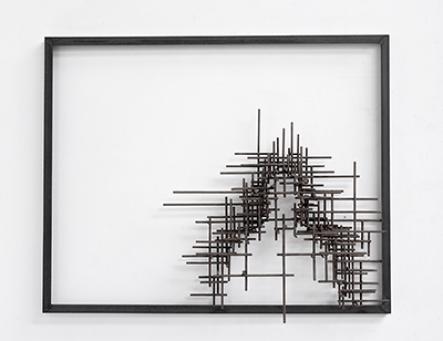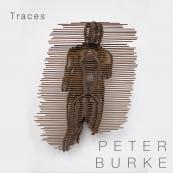TRACES
Traces began with a series of experiments to attempt to give form to the physical space we occupy; to make an equivalent to the human presence and our place in that void.
I settled first on a method known as stacking. It is in fact one of the simplest constructional methods to enclose a space. Some years back I was in California and encountered a temporary ranch fence; it was constructed of timber lengths, literally stacked on itself. This principle, applied using steel, detracts the viewer from reading the sculpture as a specific person but, interestingly, offers something more like a vessel or body trace; there is both a presence and absence to consider.
A departure from this approach was to develop an idea of applying co-ordinates to construct form in space, a kind of space-lattice or even scaffold. When considering this, I had in mind an old photograph of the Statue of Liberty under renovation. The scaffold remained while parts of the surface of the statue were removed which left a ghost-like form.
Space has as much significance as form, both in life and art. We as humans are defined as much by space as our bodily presence. Besides from the spaces we occupy, exist in and build around ourselves, to make objects that contain and enclose in some form or another is a fundamental human response. At the time of writing, we are presented daily with images on the news of skeletal remains of human habitation, specifically in Syrian cities. These spaces are redolent with powerful meanings and associations.
Sculpture that contains either a reference to or represents the human image often contains tension between the image, physicality of material and the manner of construction.
Peter Burke
March 2018






